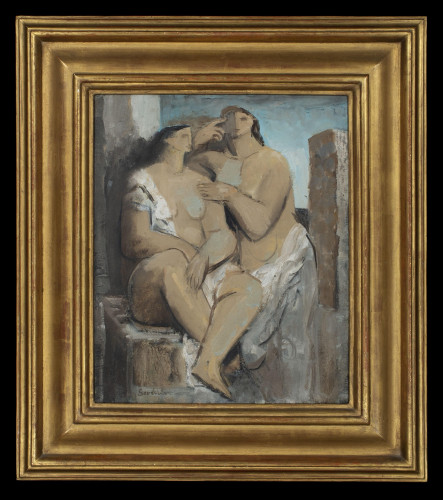West Penwith Lands End Sea RJS Oil
11689
West Penwith Sea : Inscribed 'RJS' bottom right label verso 'for Bryan with thanks' The artist has abstracted the composition and using rough handling, a palette and thick impasto in tones of black, grey, white, yellow, blue and red evokes the harsh, raw power of the Atlantic waves, the winds and the rocks which characterise this area.
In a white painted frame : Length 67 cm., 26 1/2" Height 88cm. 34 1/2"
West Penwith peninsula or Lands End is attached to a peninsula, jutting so far out into the Atlantic that it has no choice but to bend to the ocean's moods, alternately besieged by storms or enveloped in swirling sea mists that roll inland circling the granite carns, blurring and softening their outlines so they seem to change shape in front of your eyes. At its most violent, the sea can strip a beach of its sand in a single night or topple a quay. It pounds the cliffs relentlessly until by winter's end it sinks into an exhausted stupor. Everywhere you look rock erupts through the surface of the land, in the fields as great earthfast boulders; in the carns and on the cliffs as great battlements. The oldest rocks are the slates and mudstones around Mount's Bay. They were formed at the bottom of a deep ocean about 370 million years ago. At about the same time pulses of volcanic magma were injected into the soft sediments and onto the seabed. Around the rim of Mount's Bay this combination of slate and basalt produces a coastline of alternating coves and headlands. The soft slates tend to form tiny inlets like Prussia Cove, and the tougher basalt, promontories like Cudden Point and the Greeb.
20th Century
circa 1980
Canvas
England
Designers
Commemorative
GOOD. Wear consistent with age and use.
1













